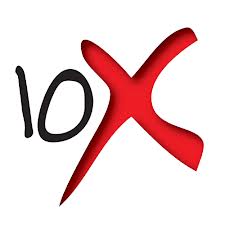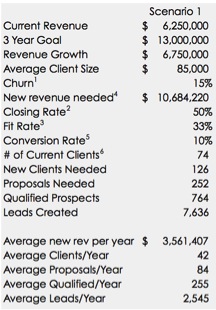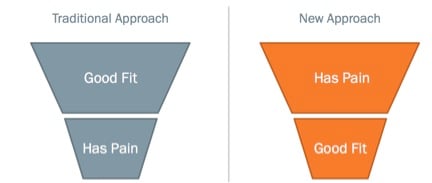 Several years ago an early sales mentor of mine called me up to say that he was looking to start a new business and he wanted to know if Imagine could help him on the lead generation and marketing side of things.
Several years ago an early sales mentor of mine called me up to say that he was looking to start a new business and he wanted to know if Imagine could help him on the lead generation and marketing side of things.
I asked what his goals were, and he told me that it was really just a sideline thing (he was primarily retired) and he said that if it could do $200,000 to $300,000 he’d be really happy. My response surprised him a little bit.
I told him that in many ways it’s easier to build a $3 million business than a $300,000 business. That the actions you need to take to make sales predictable and sustainable, let alone scalable, there is a momentum and velocity point you must hit, and it’s virtually impossible to calibrate that velocity to small revenue numbers.
The Mistake Small & Mid-Market Companies Make With Their Lead Generation Strategy
Now, don’t get me wrong. I’m in no way saying you can’t build a business (or practice) that does $300,000 revenue. I’m saying that very small companies like that give up predictability and sustainability. This is probably the central pain to running a small business.
You may be asking why I’m sharing this story on a blog geared to companies that are already doing $3 million or more in revenue. The answer: because most $10 - $100 million businesses make the same mistake my friend made.
When I work with companies one of the tools we use to define what's needed in execution is The Lead Generation Calculator™. This is a tool that determines how many proposals, qualified prospects and leads your company needs to generate a year to meet your revenue targets.
Executives (and salespeople) are typically surprised by just how many leads need to be created to generate their desired sales growth.
 To illustrate, let’s look at a sample company. In this instance The Acme Corporation (where’s Road Runner when you need him) is currently doing just over $6 million/year. Their 3-year goal is to get to $13 million.
To illustrate, let’s look at a sample company. In this instance The Acme Corporation (where’s Road Runner when you need him) is currently doing just over $6 million/year. Their 3-year goal is to get to $13 million.
Based upon their average sale, and sales ratios we are able to determine that over the next three years they need to:
- Add 126 new clients
- Make 252 proposals
- Generate 764 qualified prospects.
- Generate 7,636 leads
It’s always the 7,000 plus leads that shocks them.
What I’ve learned is that smart executives tend to focus on the qualified prospects number and often confuse or associate with the number of leads that need to be generated. It can be surprising to realize that you need more than 2,500 leads to create 42 customers.
Why So Many?
Lead generation is a top of funnel activity. blog, shares, the entire nature of prospecting and lead generation is undergoing a transformation caused by the growth of inbound marketing.

In the past the first sales focus was to narrow down who was a good fit for your company. Then your sales team would go out and call on those organizations to find out who had the pain that you solve. This approach never played to the advantage of small and mid-sized B2B organizations.
Today, the formula has shifted. Your focus needs to be on connecting with people and organizations that have the pain your solve, then determining if their a good fit.
While the end goal is still the same – find people who have the pain you solve and fit your profile – the approach is different. The truth is that this approach was always better, there was just never the means to implement it effectively.
Why You Need to 10x Your Lead Generation Results
Now back to Acme. If they want to predictably and sustainably generate 255 qualified prospects, their message is going to need to resonate with at least 2,500 people who have the pain, or at least think about it, that you solve.
When you factor timing, fit and other considerations that will prevent people from buying from you, that is the scale you need to achieve consistently to make your sales growth predictable and sustainable.
Now, if that number scares you, it shouldn’t. The tools and approaches that exist for small and mid-market businesses today make this type of lead generation completely attainable. You just need to make the decision, and allocate the resources to make it happen. Your growth, profits and business value will be thankful you did.

 Doug Davidoff
Doug Davidoff